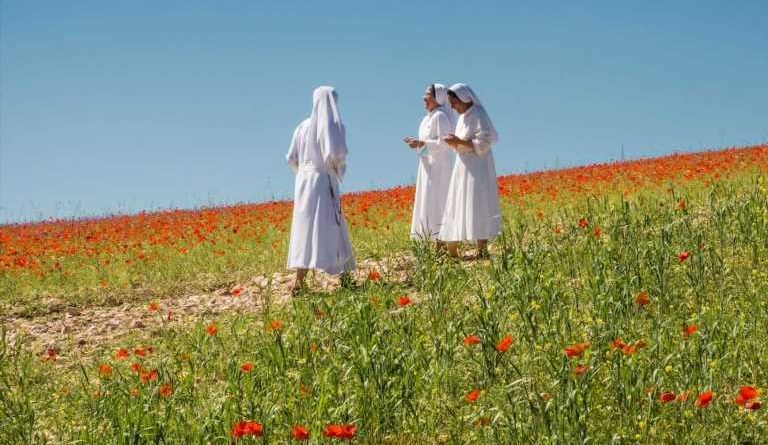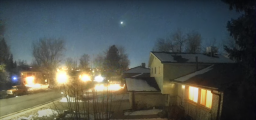Will crowds ruin Italy’s famed wildflower bloom?
Once a year, the single gravel road that leads to the tiny Italian village of Castelluccio di Norcia becomes a front-row seat to one of Europe’s most stunning nature shows.
Between mid-May and early July, wildflowers paint the Piana Grande plains below in shades of gold, crimson, and blue, giving life to fioritura delle lenticchie (Italian for “lentil blossoming”), or more commonly, la fiorita di Castelluccio.
In this verdant landscape of Umbria, a region dubbed Italy’s “green lung,” the summertime bloom is a point of pride for locals, a bright spot to look forward to each year. After 2016’s two catastrophic earthquakes and 2020’s coronavirus pandemic, la fiorita has taken on even more importance.
“At least the [second] quake’s brutality didn’t in any way alter the beauty of the landscape that surrounds us, thank God,” says Nicoletta Marziali, who lost her ancestral family home and business in the 6.6-magnitude temblor. “That would’ve meant a collective heartbreak.”
But now, as international travel restrictions begin to lift, locals like Marziali worry about a new threat—hordes of tourists trampling the delicate flowers for photos and social media posts, a problem that has plagued other wildflower hotspots, such as California, in recent years.
Last year’s la fiorita offered a worrying sign of what may come. After Italy’s strictest lockdown lifted in early May, 20,000 outdoor-starved visitors flocked to Castellucio during a peak weekend in late June. A handful were spotted stepping in the fields and plucking the flowers.
“[Visiting] was nearly impossible because of the traffic and the overcrowded trails,” says Claudia Cenci, a Perugia resident who hikes in Castellucio often. “In a few years [enjoying this area] might become unsustainable.”
Leave it to nature
Gallery: Bears Ears National Monument in southern Utah (USA TODAY)
Bordered on one side by the Sibillini Mountains and sheltered in the Monti Sibillini National Park, the Piana Grande is a karstic (limestone) basin cradling lentil farms, Castellucio’s primary source of revenue.
Load Error
Prized for their delicate, nutty flavor, the tiny, brownish-green lentils are not treated with pesticides here because they’re farmed at a high altitude. The below-zero winter temperatures naturally kill predators, such as the legume-munching weevil.
The absence of chemicals plays a key role in la fiorita; it allows nature to take its course. Lentil plants send out tiny white blossoms that mingle with mustard flowers, poppies, legousia (Venus looking-glass), and cornflowers throughout the growing season.
“I like to believe it’s because we pledged to cultivate [the lentils] with the least environmental impact, that nature rewards us every year with one of its most beautiful shows,” says Nello Perla, founder of the 40-year agricultural cooperative of 13 farms that use only organic farming methods in the valley.
(Why doesn’t the U.S. have more organic farms?)
Because the farmers plant their crops at different locations and on different dates, the flowers sprout at different times. That’s the secret to the alternating pattern that has made this landscape famous worldwide, says Perla.
Each wildflower’s appearance indicates a ripening phase in the lentils’ life cycle, alerting farmers to the best time to harvest, explains Nunzio Testa, secretary of Pro Loco Castelluccio, a tourism organization founded in 1982. “This is Castelluccio’s unique way of communicating with nature,” he says, with a laugh. “We just look out of the window and the colors tell us what to do.”
A hiker’s paradise
While the area is an important agricultural zone, it’s also an outdoor lover’s dream. Hiking trails overlook the valleys and mountains, stretching as far as the eye can see. In recent years, Castelluccio has become a sought-after weekend escape from the bustle of urban life for many Italians.
Hiking guide Simone Gatto credits the popularity of these trails to their level of accessibility; they can accommodate all types of hikers, from inexperienced to well-seasoned, from individuals to families. “They’re good to explore by bike or on horseback,” he says. “This place can make any kind of hiker happy.”
Cenci has long explored these trails and had been looking forward to visiting after quarantine. “I traveled all over the world before the pandemic, but I feel lucky because the most beautiful landscape of all is just a few kilometers away from home,” she says.
(These are some of Europe’s most stunning under-the-radar hikes.)
But seeing more visitors discovering the area’s natural beauty has Castelluccio residents thinking of ways to stem the effects of mass tourism. California’s Lake Elsinore, where “poppy mania” has threatened the local ecosystem, is one source of inspiration. There, volunteers are limiting cars into the area and pedestrian access to the fields. To help reduce pollution, they’re providing shuttle service for a small fee.
But for residents like Marziali, the most effective path is education. If monitoring traffic proves to be insufficient in reducing the negative impacts, Marziali says citizens of Castelluccio are considering other options, such as free workshops. In the coming years, these informal classes could teach tourists how to enjoy the view responsibly.
“We are eager to share the emotional benefits of this uplifting view with the rest of the world, especially now that we have all gone through hard times” because of the coronavirus, says Marziali. “But we also want visitors to soak up our principles of respect towards the environment, so that tourism can also become as sustainable as our harvesting methods.”
Source: Read Full Article




